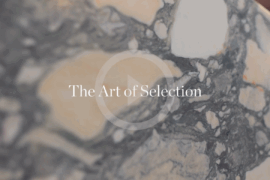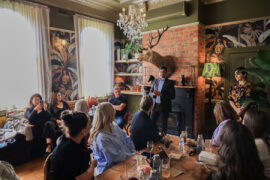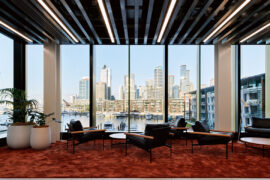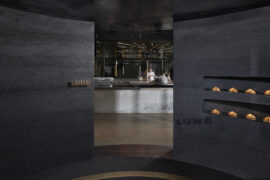Konstantin Grcic is one of the most successful industrial designers working today. When Lucy Bullivant met up with him, she discovered a designer revelling in the unpredictability of today?s design and manufacturing process.
May 19th, 2008
Konstantin Grcic’s Munich office is dense – a ‘den’ of recent designs humming with energy. Countless prototypes at various stages are laid out across the room, a scene punctuated with zinging spots of yellow, orange, red, green, turquoise and blue. Walls are bedecked with illustrations – art, graphic design, and his own distinctive sketches and CAD drawings.
This exuberant menagerie belies Grcic’s agenda to simplify complexity without letting quality fly out of the window.
Grcic originally trained as a cabinet-maker. His work has a passing resemblance to 20th century masters such as the Castiglioni brothers and Alvar Aalto – whose work often translated material and construction into one fluid form – sharing with them an optimism about industrial processes.
His has been a career characterised by consistency, exploration and confident expression. From his own personal perspective, the 42-year-old German (his family name ‘Grcic’ is Serbian) considers himself lucky to work with manufacturing clients with whom he enjoys a strong personal relationship.
But he sees a waning in the social ethos shared by the leading post-War industrialists – Zanotta, Kartell and Flos – and their designers, engineers and craftsmen. “The time span for companies to produce new products has become incredibly short. The pressure for commercial success cuts out experimentation and risk. Labour costs force production to move away from the place where the object was created. Marketing strategies overrule a personal approach.”
The media spotlight first found Grcic in 1992, soon after graduating in furniture design from the Royal College of Art in London. His design for small tables with vertical compartments for books led to his first real client commission, a pair of geometric side tables – ‘TomTom’ and ‘TamTam’ – with a single sliding foot regulating the height of the top.
Produced by the London firm of SCP, the first to introduce Jasper Morrison and Terence Woodgate to the international market, their sales were modest, but Grcic’s beguiling mix of economy and strangeness, pragmatism and humour indicated an original talent.
Lured by London’s entrepreneurial climate, overseas designers graduating from the city’s colleges are more likely to stay in the UK nowadays than they did in the recession-laden early 1990s. German, Gitta Gschwendtner and the Spanish trio, El Ultimo Grito, are among those who live in London and observe how its embrace of contemporary design has grown.
But although Grcic spent a year working with English designer, Jasper Morrison, interest from clients in Germany led him back to his home city of Munich in 1991.
With its relaxed ambience, cycle paths and tidy streets, and enlivened every autumn by the Octoberfest beer festival, the Bavarian city is also a sophisticated centre for design in Europe, being top lighting designer Ingo Maurer’s professional base. It’s cheaper than London by far, suiting an individualist lover of the pace of urban life (and Formula 1) like Grcic who has quite an English sense of humour along with the focussed drive that makes him so productive….
This article is an extract from Indesign Magazine Issue #33 (May, 2008). To read the whole article please refer to the print version.
Lucy Bullivant is Indesign Magazine’s London correspondent.
Konstantin Grcic
www.konstantin-grcic.com
INDESIGN is on instagram
Follow @indesignlive
A searchable and comprehensive guide for specifying leading products and their suppliers
Keep up to date with the latest and greatest from our industry BFF's!

London-based design duo Raw Edges have joined forces with Established & Sons and Tongue & Groove to introduce Wall to Wall – a hand-stained, “living collection” that transforms parquet flooring into a canvas of colour, pattern, and possibility.

CDK Stone’s Natasha Stengos takes us through its Alexandria Selection Centre, where stone choice becomes a sensory experience – from curated spaces, crafted details and a colour-organised selection floor.

Business and leisure come together in a space of ‘intentional mismatches’ at the Kuala Lumpur office of property development company Mantab Group.

The world of wine storage is vast, with many storage options and even more aesthetic choices present for the wine appreciating design lover. Thankfully, Sub-Zero has the solution.
The internet never sleeps! Here's the stuff you might have missed

Guests joined Cosentino for a behind-the-scenes look at The Block homes, discovering new materials and creative partnerships.

Warren and Mahoney’s design for Beca’s Auckland headquarters turns the mechanics of engineering into poetry, rethinking how workplace design can reveal its own systems.

Cieran Murphy has been awarded The Photographer – Commercial at the INDE.Awards 2025. His work on Lune Rosebery captures the immersive design and storytelling of the space, highlighting the interplay of form, material and atmosphere in this contemporary culinary destination.